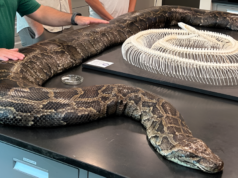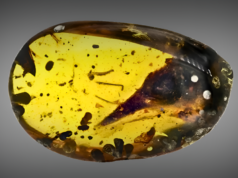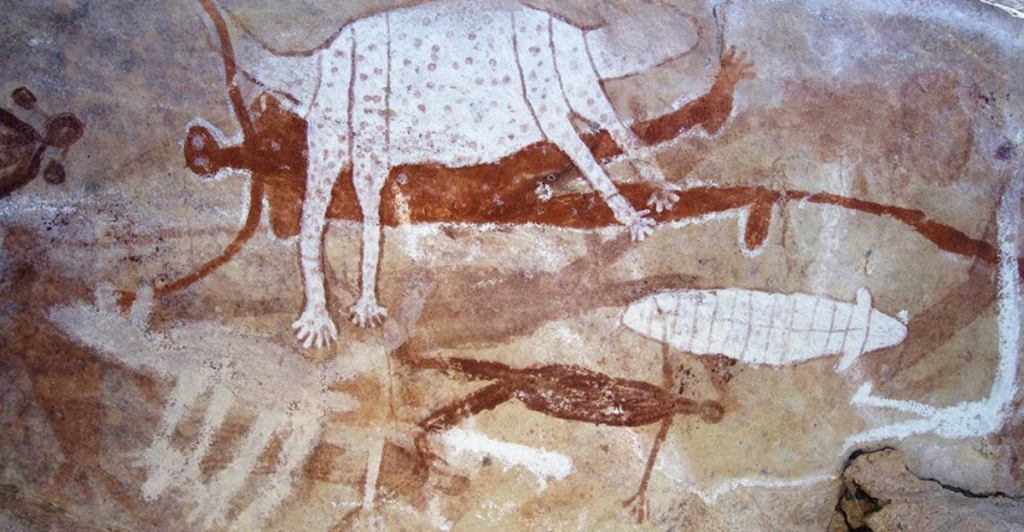
Archaeologists have uncovered extensive rock art in Colombia’s Amazon rainforest dating back approximately 12,500 years. These ochre paintings, found on cliff faces in the Serranía de la Lindosa, offer a glimpse into the lives of early inhabitants. The artwork includes thousands of images depicting humans, animals, and geometric patterns, reflecting a rich cultural history.
The Serranía de la Lindosa Site
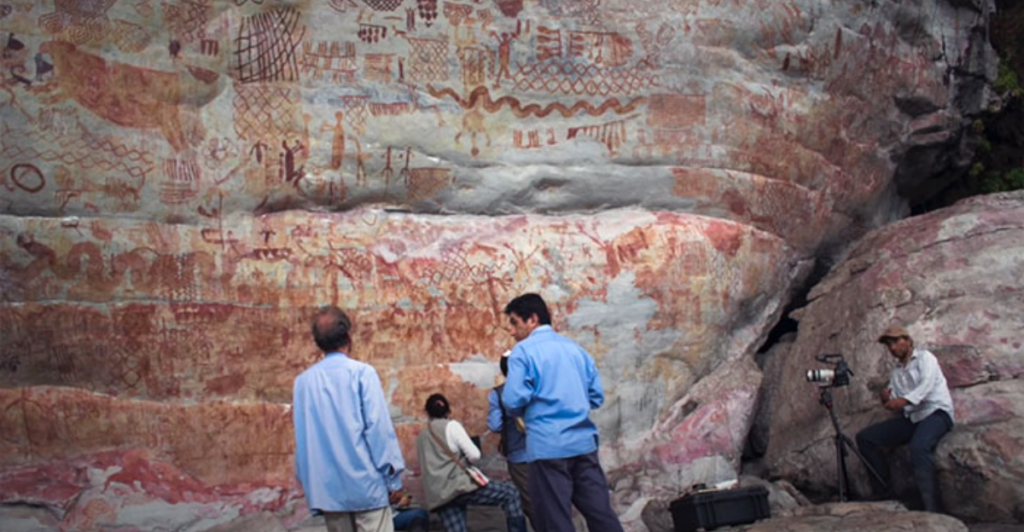
The Serranía de la Lindosa, located in Colombia’s Guaviare Department, is renowned for its extensive rock art. The site features numerous paintings created with red and yellow ochre, showcasing the artistic expression of ancient communities. These artworks provide valuable insights into the region’s prehistoric cultures and their interactions with the environment.
Depictions of Extinct Megafauna
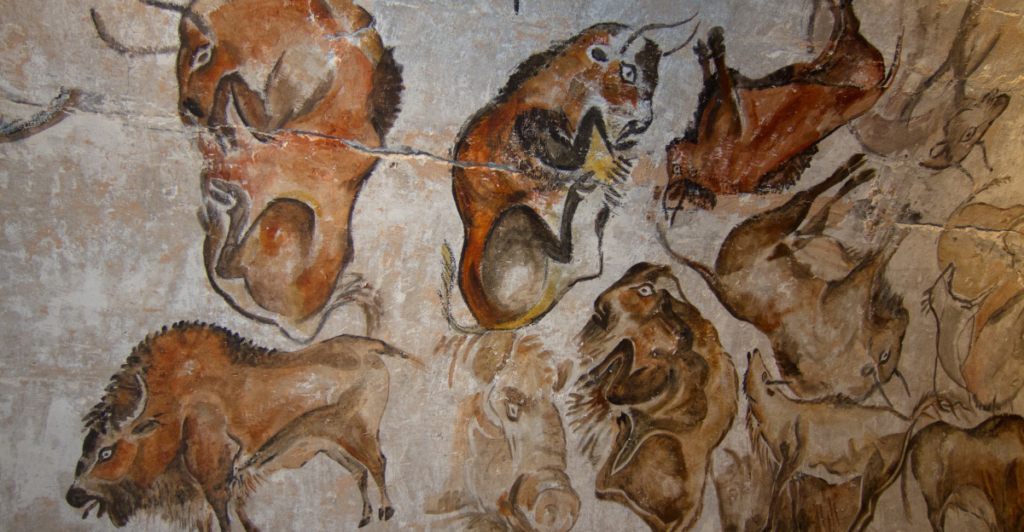
Researchers have identified images in the rock art that may represent now-extinct megafauna. These include large herbivores resembling giant sloths and ancient relatives of elephants, which roamed South America during the Ice Age. The presence of such depictions suggests that early humans coexisted with these creatures.
Artistic Techniques and Materials
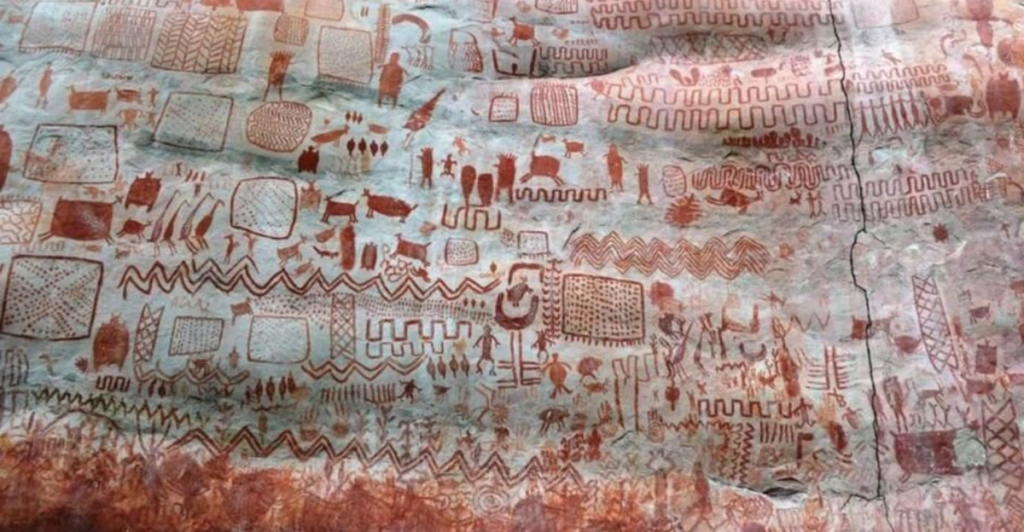
The ancient artists employed ochre pigments to create their paintings, utilizing shades of red and yellow. Using natural pigments indicates a deep understanding of available resources and artistic techniques. The durability of these materials has allowed the artwork to withstand the test of time, offering a window into prehistoric life.
Human Figures and Daily Life
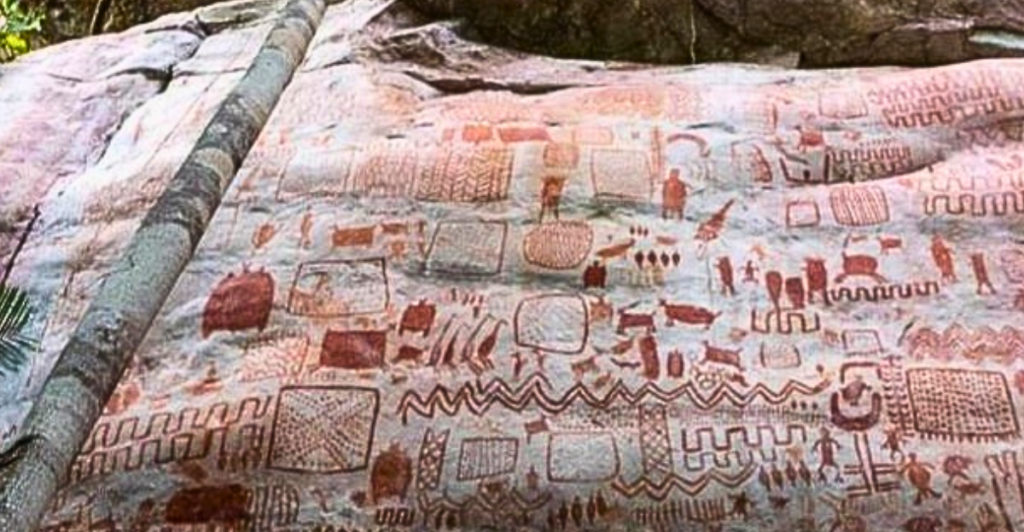
The rock art includes numerous depictions of human figures engaged in various activities. Scenes portray individuals hunting, dancing, and interacting with animals, providing insights into the social and cultural practices of the time. These illustrations highlight the importance of community and the relationship between humans and their environment.
Symbolism and Mythology

Some paintings depict humans and animals transforming into one another, suggesting a rich mythology among these ancient communities. These images may represent shamanistic practices or beliefs in the interconnectedness of life forms. The symbolic nature of the art indicates complex spiritual and cultural systems.
Biodiversity in Ancient Amazonia
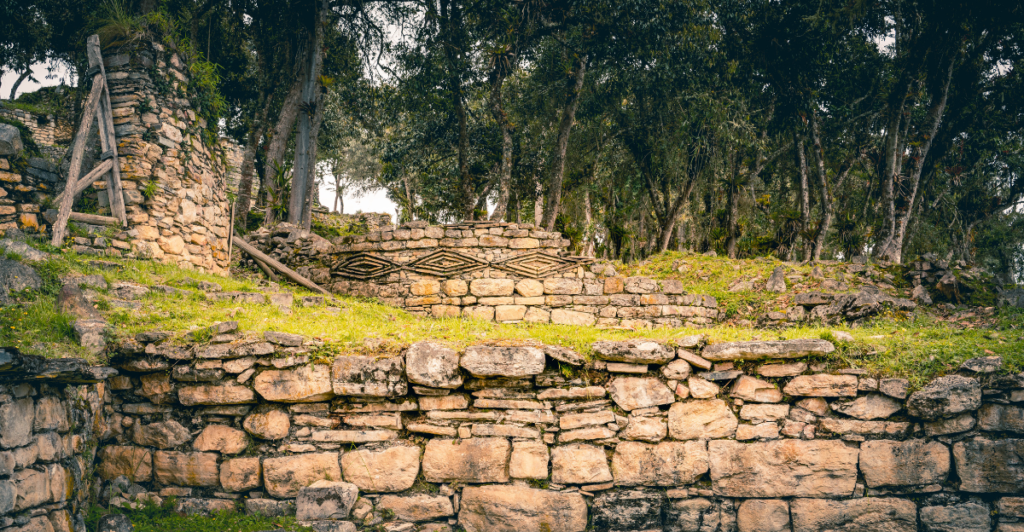
The variety of animals in the rock art reflects the rich biodiversity of the ancient Amazon. Images include deer, birds, lizards, turtles, and tapirs, showcasing the diverse fauna that inhabited the region. This diversity underscores the abundance of resources available to early human populations.
Implications for Archaeology
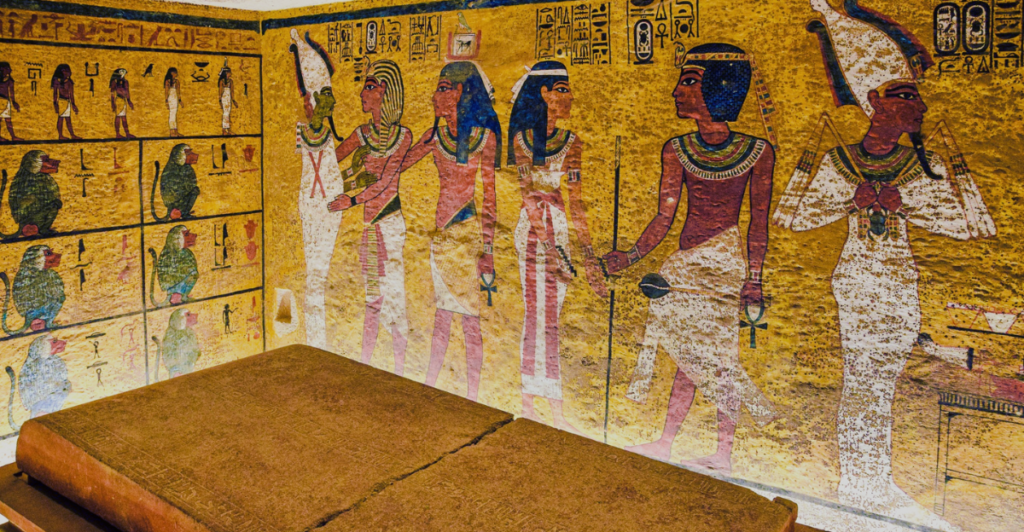
The discovery of this extensive rock art provides valuable data for archaeologists studying early human migration and settlement patterns in South America. The depictions of extinct animals offer clues about the timeline of human habitation and interactions with megafauna, contributing to a broader understanding of prehistoric life in the Amazon.
Preservation Challenges

Preserving these ancient artworks poses significant challenges due to environmental factors such as weathering and vegetation growth. Efforts to document and protect the site are crucial for maintaining its historical value. Advanced technologies like drone photogrammetry aid in creating detailed records of the paintings for future study.
Cultural Significance Today

For contemporary indigenous communities, rock art holds cultural and ancestral significance. It serves as a tangible link to their heritage and offers insights into the beliefs and practices of their ancestors. Recognizing and respecting this connection is essential to preserving the site’s integrity.
Comparative Rock Art Studies
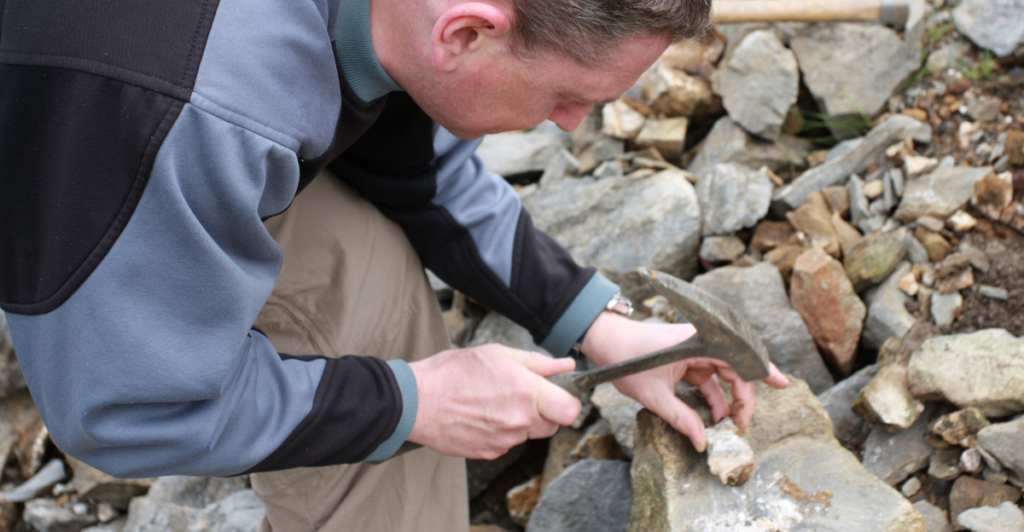
Similar rock art sites have been found in other parts of the Amazon and South America, indicating widespread artistic expression among early human populations. Comparative studies help researchers understand regional variations and common themes in prehistoric art, shedding light on cultural exchanges and adaptations.
Future Research Directions
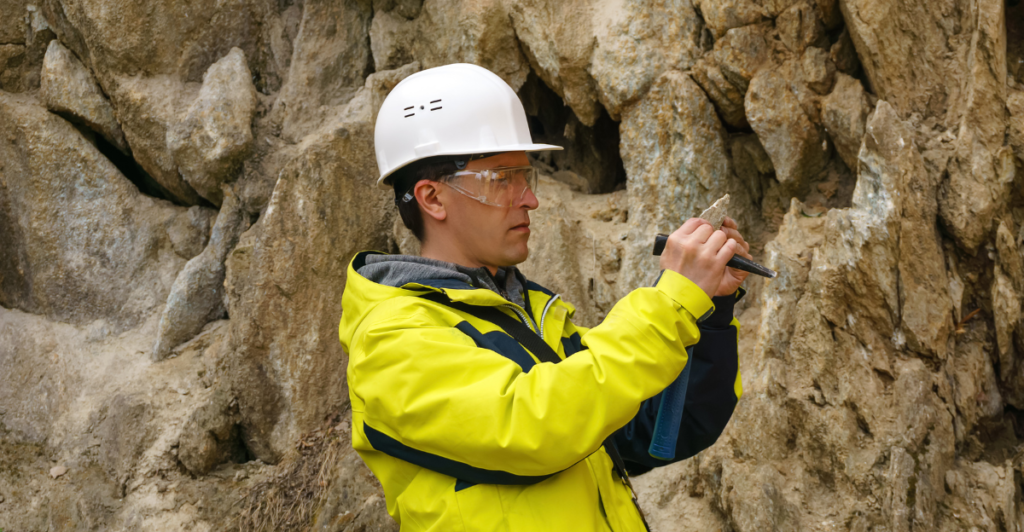
Ongoing research further analyzes rock art’s content, dating, and context. Interdisciplinary approaches combining archaeology, anthropology, and environmental science will enhance our understanding of these ancient societies. Future studies may reveal more about early Amazonian inhabitants’ social structures, economies, and belief systems.
Visiting the Rock Art Sites
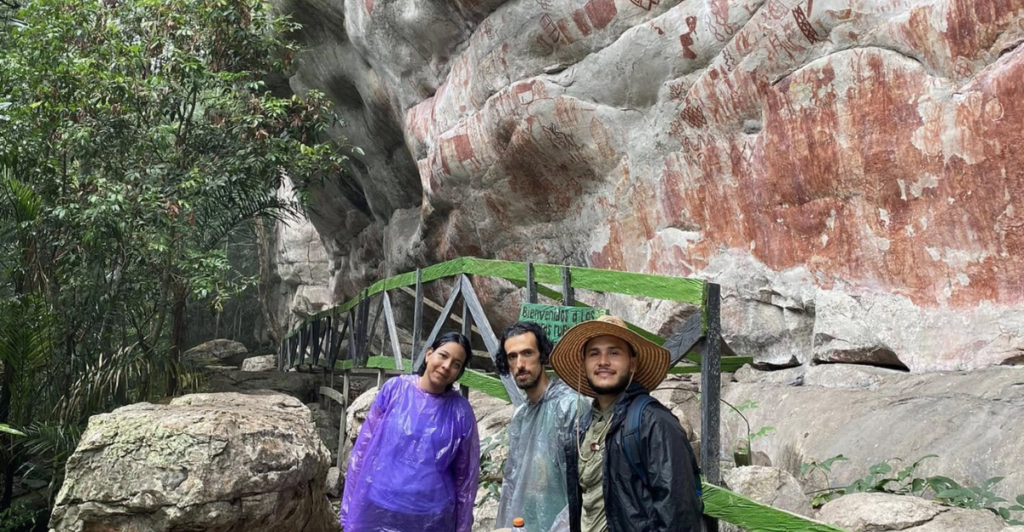
While access to the Serranía de la Lindosa is limited to protect the site, virtual tours and documentaries offer alternative ways to explore the rock art. These resources allow the public to appreciate the historical and cultural significance of the paintings without compromising their preservation. Engaging with such materials fosters a greater appreciation for humanity’s shared heritage.
Discover more of our trending stories and follow us to keep them appearing in your feed

California Is Breaking Apart: A Fault Line Is Forming Faster Than Anyone Predicted
Philanthropist Promises To Cover $771.23M Annually After US Exit From Climate Accords
After 800 Years of Silence, This American Volcano Shows Signs of Activity
Lakes and Rivers That Harbor Rare Species You May Not Have Known About
References:
Reference 1
Reference 2
Reference 3
This article first appeared here
Stay connected with us for more stories like this! Follow us to get the latest updates or hit the Follow button at the top of this article, and let us know what you think by leaving your feedback below. We’d love to hear from you!


